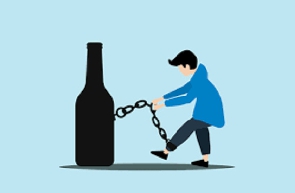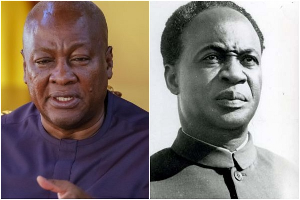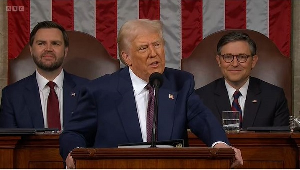The World Health Organization defined alcohol as a psychoactive substance with dependence-producing properties that have been widely used in many cultures for centuries. The term alcohol is derived from the common Arabic word al-kohl which is a dark cosmetic powder still used by Arabic women beneath the eyes. There are four types of alcohol; ethyl, denatured, isopropyl and rubbing. For this article, attention will be based on the commonly known and used alcohol, ethyl also known as ethanol.
Generally, alcohol (ethanol) is a colourless volatile flammable liquid which is produced by the natural fermentation of sugars and is the intoxicating constituent of wine, beer, spirits, and other drinks, and is also used as an industrial solvent and as fuel. Alcohol though used for many purposes is more consumed when constituted in beer and other drinks. Alcoholic drinks over the years were largely consumed by the aged in society, but currently, the youth are on the run to overtake the adults as far as its consumption is concerned.
Various factors influence the consumption of alcohol.
These factors are classified into internal and external causes. Some of the internal causes are genetic, where the individual inherits the nerve for Pleasure in the intake of alcohol from parents and it is mounted in the victims’ genes, psychological, depression or illness, anxiety and curiosity. some youths tend to consume alcohol when they are depressed, they feel being intoxicated may help them forget their problems and will help them catch fresh humour. Some people are fed with medicines that contain alcohol whilst others consume alcohol out of curiosity just to have a feel of it.
However, there are external factors as well, these include society, church, family, government and the media. Families who have victimized parents tend to influence the rest of the children in the families to do the same whilst broken homes also introduce children to this. The society also plays a role; when one finds himself in an environment where the majority of the people take in alcohol or the culture of the area frowns not on alcohol abuse, the youth normalize the intake of alcoholic drinks.
Prominent people in society who take in excessive alcohol usually influence the youth who look up to them in life to do the same. Schools also are not left out of the external factors influencing the intake of alcohol amongst the youth. Peer pressure is a very common yet critical agent in influencing others. As far as alcohol consumption among the youth is concerned peer pressure cannot be underestimated. Students always want to have a sense of belonging. Many of them would want to do what the majority of the people within their cycle do.
It is easy for the youth to start consuming alcohol in school where parents are not available and guards of teachers are very loose. The government is no exception when there are no restrictions on the consumption of alcoholic goods and less or no tax impositions on the goods, the price of the goods becomes less expensive for the average youth who even without high-income earnings can purchase and consume these goods.
Adverts of these goods on social media also is a major factor influencing the youths to consume alcohol. The media space tends to show positive short-term implications of consuming alcoholic drinks with no or less exposure to the long-term negative implications. The youth being curious would want to consume these goods.
Alcohol consumption is associated with causes of over 180 diseases, including injuries, and ill socio-economic conditions. Certainly, alcohol intake causes cardiovascular diseases, behavioural disorders, including alcohol dependence, and major noncommunicable diseases such as liver cirrhosis, cancers, liver damage, alcohol hepatitis, gastritis, heart attacks, erectile dysfunction, neurological complications such as numbness and short-term memory loss, increased risk of cancer of the mouth, stomach, breast and kidneys.
Also, there are some other socioeconomic effects such as dishonour, cash swallowing and time consumption. When one takes in alcohol, they usually tend to neglect the most important things and focus their attention on less important ones, this might be a result of being sober or memory loss after intoxication.
The youth also tend to have issues including legal offences since they might go against rules and regulations associated with certain actions; for instance, drinking and driving or getting involved in social vices.
Alcohol intake among the youth is becoming very dominant and society might lose prominent people or future leaders in years to come if attention is not shifted to the youth to help rescue them from alcohol abuse.
Opinions of Monday, 14 November 2022
Columnist: Elliot Senyo Fiadufe



















